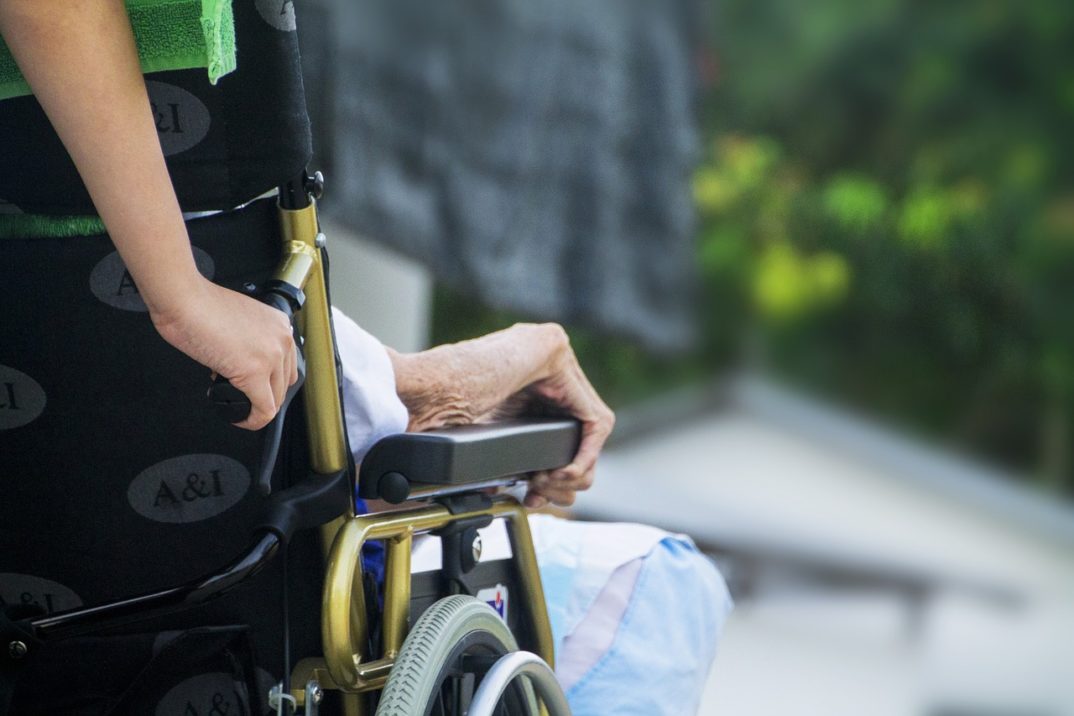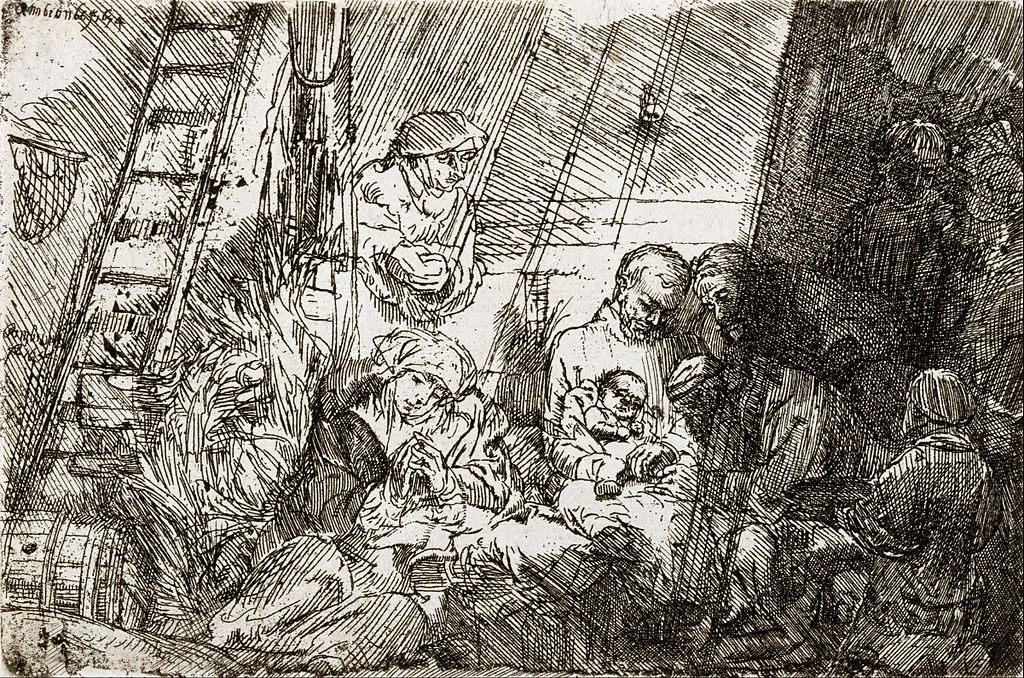The suppression or eradication of many serious diseases in vaccinated populations has been one of the great public health successes of the twentieth century. There have always been those who resist or refuse vaccination for a variety of religious, political, or health reasons. Though there can be some risk of negative reactions to vaccines in certain individuals, vaccination is very safe for the general population. Continue reading “Vaccination Abstention and the Principle of Autonomy”
The Inherent Conflict in Informed Consent
A recent study has drawn attention to the relatively poor medical reasoning capabilities of terminally-ill patients. These groups continue to show a marked lack of understanding of their condition and their future care. More concerning, perhaps, is the study’s finding that medical staff consistently failed to recognize these deficiencies in competence. Ultimately, the study supports mounting evidence that the bright line we draw to separate individual autonomy from institutional paternalism is too simplistic. Patient competence is overestimated and physicians’ impact is underappreciated. And this has important implications for how we see informed consent.
Informed consent is a process, made up of the many communications between a doctor and a patient (or clinical investigator and research participant). Details regarding the purpose, benefits, and risks of, as well as alternatives to, a given treatment are relayed so as to enable potential clients to deliberate and decide whether the medical intervention offered aligns with their interests. As a patient has all the freedom to decide what should or should not happen to her body prior to undergoing a clinical trial or medical procedure, the decision is to be made free from coercion; the doctor acts so as to facilitate patient decision-making. Achieving this requires adequate, accurate information be provided in terms the patient can easily understand.
Legally, informed consent represents a basic threshold of competency that a patient must be assisted in meeting in order to legally acquiesce to a medical procedure. It exists to safeguard bodily integrity — the right of self-determination over our bodies. It grants legal permission and protects healthcare providers from liability.
Morally, informed consent is a compromise between epistemic merits and welfare interests. Informed consent balances doctors’ medical expertise against patients’ unique knowledge of their preferences. While physicians might know best how to treat injury and combat afflictions, they are less equipped to make determinations about the kind of risks a patient is willing to take or the value she might place on different health outcomes. As patients must live with the consequences of whatever decision is made, we tend to privilege patient autonomy. Once properly informed, we believe that the patient is best-positioned to determine the most suitable course of treatment.
The trouble, as studies like this show, is that patients are not the autonomous healthcare consumers we assume them to be. They are often dependent on the doctor’s expertise and medical advice as many suffer from some combination of informational overload and emotional overwhelm. Patients’ weak grasp of their medical prognosis is offset only by the trust they have in their physician and a general deference to authority.
This means that informed consent is, in many cases, simply not possible. Patients who are very young, very ill, mentally impaired, or even merely confused are not capable of demonstrating sufficient competence or granting meaningful permission. Unfortunately, patient literacy is overestimated, communication barriers go undetected, and patient misunderstanding and noncompliance continues. Findings suggest that thorough assessment of patient competence is rare, and patients’ comprehension is questioned only when their choice deviates from the physician’s recommendations.
An increased focus on patient education may not be enough to combat these problems. Efforts to present information in a more accessible manner may bring some improvement, but there are many medical situations where the sheer complexity or volume of the information involved outstrips the decision-making capacity of everyday patients. Some types of medical information, like risk assessments, use probability estimates that would require formal training to fully appreciate and thus overburden patients’ capacity to adequately comprehend and reasonably deliberate. In such cases, no amount of dialogue would allow a patient to attain the understanding necessary for informed decision-making.
In the end, the possibility of an equitable doctor/patient consultation is rarely a reality. As Oonagh Corrigan explains,
There needs to be a realisation that the type of illness a patient is suffering from, her anxiety about the likely trajectory of her illness, her expectations about treatment and, in general, her implicit trust in the doctor and medical science mean that ‘informed choices’ based on an adequate understanding of the information and on careful consideration of the potential benefits and risks, are difficult to achieve in practice.
We cannot maintain our idealistic divide between autonomous decision‐making on the one hand, and autocratic paternalism on the other. From framing effects to geographic bias, a physician is bound to have a greater hand in decision-making than our common conception of the dynamic allows.
Some may say that the trouble is sufficiently curtailed by the Hippocratic Oath. A doctor’s duty to the health of a patient is thought to limit the possibility of abuse. But the physician’s obligation to do no harm offers little guidance on the ground. The duties of nonmaleficence and beneficence share no necessary tie to the particular social and cultural values of patients. They would, for example, recommend the administering of blood transfusions to patients whose deeply-held religious beliefs disallow it.
Finding a suitable middle ground between individual autonomy and institutional paternalism is particularly tricky. The territory of informed consent is already a political battleground. One need look no further than the dispute concerning mandatory pre-abortion counseling or talk therapy for transgender patients. While we may wish physicians to take a larger role in the care of those who genuinely lack capacity, this would inevitably lead to the silencing of legitimate interests. Any acceptable resolution of this tension is bound to be hard-won.
What It Means to Legalize Euthanasia
Euthanasia and physician assisted suicide are gradually gaining acceptance: both legally and socially. As of 2016, Canadians have a right to assisted suicide. New Jersey may become the next American state to allow some form of medically assisted suicide, joining a list that includes California, Colorado, Hawai’i, Montana, Oregon, Vermont, and Washington. The national debate surrounding Dr. Jack “Death” Kevorkian, who oversaw the deaths of over one hundred people and was subsequently sentenced to 10-25 years in prison, seems like the distant past. But now it is time to shine that spotlight of public attention on euthanasia once more.
Dr. Kevorkian once explained his rationale for administering lethal injections: “My aim in helping the patient was not to cause death. My aim was to end suffering.” The arguments in favor of euthanasia (lethal injection administered by a physician) and physician assisted suicide (lethal prescription taken by the patient) are in ways difficult to combat. Who are we to deny a suffering soul an accelerated but peaceful passage to the Afterlife? Who are we to judge someone for exercising their right to a dignified death? Some argue that to deny euthanasia is to deny a permanent reprieve from suffering.
Proponents of euthanasia typically use terminally-ill patients who are enduring pain and have no prospects for improvement as the kind of patient who exemplify a situation in which euthanasia is the most merciful option. Few would not have sympathy for this request and might therefore approve of euthanasia in this limited circumstance. But it would be useful to explore how even this narrowly defined support can actually permit scenarios beyond terminal illness.
When introduced into legislation and enforced by governments, euthanasia fails to be constrained to that limited circumstance. Some may argue that this a misapplication of the ideal extent of permissible euthanasia. The legalization of euthanasia is a prime example of how the ideal application and the actual reality of a concept often fail to mirror each other perfectly. Indeed, even the most stringent restrictions on euthanasia allow for certain individuals to be euthanized when they ostensibly should not have been.
For example, the Netherlands – one of the first countries to decriminalize euthanasia – have very strict criteria for legal euthanasia. After the patient has been euthanized, the Regional Review Committee reviews the following “due care” criterion (if the case fails to meet the any of the criterion, the physician is to be prosecuted):
-
- the conviction that there was a voluntary and well-considered request from the patient
- the conviction that there was hopeless and unbearable suffering of the patient
- has informed the patient about the situation in which it was present and about its prospects
- the patient has come to the conclusion that the situation in which they found no reasonable alternative
- has consulted at least one other independent physician , who has seen the patient and gave his judgment in writing about the aforementioned due care criteria.
- has carefully completed the termination of life or assisted suicide.
- In 2016, these seemingly restrictive criteria nevertheless approved Mark Langedijk for euthanasia not because of a terminal illness but because of alcoholism. The despondent 41-year old alcoholic, who entered rehab 21 times, conceded that “enough is enough” after his marriage ended and he moved back in with his parents. It appears that Langedijk displayed hopeless and unbearable suffering, yet it is doubtful whether he could have made a voluntary or well-considered decision because of emotional strain of his alcoholism and the related desperation. This particular case is relevant because it intersects with the suicide crisis facing middle-aged men.
But Langedijk should not be considered an exception to the rule in the Netherlands. The percentage of those euthanized because of terminal illness is dropping. People enduring psychological turmoil such as social isolation or loneliness, criteria that have not traditionally been considered justification for euthanasias, are becoming a growing subgroup. And there is reason to believe that this gradual widening of the acceptable criteria is an inevitable phenomenon not unique to the Netherlands.
In Oregon, the latest report shows that over half of people given the lethal prescription in 2016 listed “burden on family” and “financial implications of treatment” as their end of life concerns. Neither of these reasons relate directly to the physical suffering of the patient or their state of health, yet it is becoming an increasingly accepted justification for physician assisted suicide.
When patient autonomy is held above all other concerns governing medicine, the physician must oblige the request of the patient, whether the patient is about to die in 3 weeks and is in tremendous physical pain or is simply depressed. When the vague notion of mercy for suffering individuals is held above all other concerns, one must accept the necessary conclusion that non-physical, non-chronic forms of suffering–such as psychological turmoil–fall under the expansive list of reasons that would permit euthanasia. In fact, it seems with either justification, there would be few instances in which euthanasia would be not be permissible. This trend should not come as a surprise. Therefore, those claiming that the legalization of euthanasia is for only terminally-ill patients in physical pain are being disingenuous. The Mark Langedijks of the Medical World are not anomalies of legalized euthanasia; they are, or will soon become, normalized.
This trend in and of itself may not be morally troubling for some, namely those who value patient autonomy or dignified deaths. But the implication of the legalization on the government-civilian relationship is morally significant. What does it mean when your government allows euthanasia? How does that shift the nature of the relationship between the state and the civilians?
Perhaps the legalization of euthanasia indicates that your government values your personal liberty. Perhaps it indicates that your government is progressive, on the cutting-edge of medical ethics. But it might also indicate that your government no longer values the unconditional protection of innocent human life. Maybe it shows that your government values certain lives over others.
When a state, such as the Netherlands, examines cases of euthanized people, it is indirectly making a judgment on whose life is worth living. If an individual fails to meet one of the six criteria, they cannot be euthanized and they are to be kept alive. It is the life of the individual who fails to meet the criteria that the state deems worth saving. Some argue that the converse is true: the lives that meet the criteria are the lives the state deems not worth saving.
Indeed, activists for the disabled fear that the legalization of euthanasia relegates the status of those with physical impairments. In his piece for The Guardian, Craig Wallace writes that offering euthanasia to the disabled is not “an act of generous equality” but a “fake cruel-one way exit for vulnerable people locked out of basic healthcare and other social and community infrastructure.”
Echoing the sentiment of Wallace’s op-ed, Jamie Hale argues that people with disabilities are the strongest opponents to assisted suicide. Hale addresses the “financial burden” concern expressed by those in Oregon and says that it would be felt by the disabled, too. “People who are disabled, ill or elderly are constantly taught that funding our health and social care is a burden – that we are inherently a burden,” she writes. “I am given so little of the social care that I need that I am forced to rely on unpaid care from friends to survive.” With physician assisted suicide as an option, insurance companies and socialized healthcare may be incentivized to pursue the far cheaper lethal prescription over actual treatment.
In California, this reordering of priorities has already occured. “Stephanie Parker was informed by her insurance company that the chemotherapy she requested to treat terminal Scleroderma was not an option they were willing to provide,” writes Helena Berger. “Packer’s insurer then offered $1.20 co-pay for a handful of life-ending prescription drugs.”
There is a specter haunting the world. But is the specter laws prohibiting euthanasia or laws permitting euthanasia?
In Caring for Dementia Patients, Testing the Limits of Patient Autonomy
NPR recently reported on a new advance directive (AD) form developed by a New York end-of-life agency. This AD enables patients to express in advance the preference that they would not want to be given food or water, should they be diagnosed with severe dementia. This AD broaches new territory, as the patient’s decision, as expressed on the form, implies that they would not want to be given any food or water, even if they were still cooperative in eating food and appeared to want it. Such a possibility has not yet been formalized in an AD for dementia patients.
Continue reading “In Caring for Dementia Patients, Testing the Limits of Patient Autonomy”
Should Chimpanzees be Granted Legal Personhood?
In recent years, advocates for animal welfare have pursued legal rights for animals in the courts. Tommy and Kiko are chimpanzees who were once famous for their appearance in Hollywood films. Both now live in captivity in small cages—conditions that are far from optimal relative to what a flourishing life for a chimpanzee would look like. Hercules and Leo are chimpanzees who have been the subject of invasive medical research and experimentation for their entire lives, nearly a decade. Advocates for these animals argue that it is morally wrong to view them as mere property. There should be some legal recognition of their rights.
Continue reading “Should Chimpanzees be Granted Legal Personhood?”
Opposition vs. Prohibition: Should Iceland Ban Circumcision?
This article has a set of discussion questions tailored for classroom use. Click here to download them. To see a full list of articles with discussion questions and other resources, visit our “Educational Resources” page.
Iceland will soon vote on a bill that would criminalize infant circumcision. While the medical community is supportive, some Icelanders are concerned. It’s not so much the typical Icelandic parent who wants to retain the right to make this decision, but Jewish and Muslim leaders are concerned that a ban would intrude on core religious practices. Circumcising newborn boys is a religious commandment for both religions.
It’s a little surprising that the Icelandic physicians are united against circumcision. In 2012 the large and influential American Academy of Pediatrics issued a policy statement stating that circumcision has somewhat more health benefits than harms. There’s the pain of the procedure and the small risk of serious adverse effects, but on the other side of the ledger, a salutary effect on rates of penile cancer, urinary tract infections, and HIV infection. The AAP didn’t conclude that parents should circumcise, but on the other hand, how could it make sense for ethicists and doctors to say the opposite: that they shouldn’t, assuming that the AAP is right and circumcision is a little more beneficial than harmful?
The thought of some critics of the practice is that even if circumcision is more good for boys than bad, it takes more than a small balance of benefits over costs to justify removing a body part. Circumcising a boy isn’t like drawing a little blood or removing an infected appendix. The part in question is perfectly healthy and normal and will later be experienced by a boy as a part of his personal body surface. If he gets to keep it, he will most likely later think his foreskin is his to keep or to remove. Thus, there is a “body integrity” case to be made that parents shouldn’t circumcise their babies, even if the AAP’s cost-benefit analysis is correct.
And so, the Icelandic physicians are right to support a ban? Not so fast! A ban would stop a moral wrong, I am prepared to say (I make the “body integrity” argument in my book The Philosophical Parent), but it would impinge on two important things—a person’s autonomy as a parent and their autonomy when it comes to matters of religion or conscience. Now, parental and religious autonomy aren’t absolute; they don’t trump everything. Uncontroversially, the state doesn’t allow parents to be abusive and doesn’t allow every conceivable religious practice, whatever the associated harms (to self, others, animals, the environment, etc.). But circumcision, however suspect, does seem like the wrong kind of thing for the state to forbid.
The problem with state involvement is the subtlety of the argument against circumcision. It does seem to me that it takes more than a small balance of benefits over costs to justify the removal of a normal, healthy body part destined to be experienced by boys and men as “mine.” But I can’t go further and claim it must seem the same way to any reasonable person, as I can with other harms. If the Church of the Missing Toe wants to chop off the small toe of newborn boys, it will be all to the good and perfectly appropriate if the state forbids it. I think ritual toe amputation is wrong and expect anyone else to see it in the same way. But it’s far more subtle and negotiable whether a procedure can be both slightly beneficial, on balance—as circumcision is, according to the AAP—and also morally wrong. It seems misguided for the state to force everyone to behave in accordance with just one of the multiple positions on circumcision that are open to reasonable, well-informed people.
While I do think there are respect-worthy ways of defending circumcision, it’s difficult to see how the religious defense can be among them. The religious defense has nothing to do with costs and benefits. It has to do with ancient scriptures and the notion that a religion should be “marked in the flesh” (Genesis 17). It’s also about parents demonstrating commitment to a religion by doing something difficult. (The medieval Jewish philosopher Maimonides said the point of circumcision was precisely that it is a “hard, hard thing” for a parent to impose on a child, and so a good test of the parent’s religious commitment.) As much as these ideas seem venerable and familiar just because of their long history, how can they be any more respectable than the doings of the Church of the Missing Toe?
So, should Iceland ban religious circumcisions and protect non-religious circumcisions—of which there are very few? It would be an odd and unusual law that prohibits doing something for one reason but allows it for another. After all, the better reason is “available,” whether it’s motivating the agent or not. And so I conclude: no to the ban. Considering that there are not-obviously-wrong medical reasons for foreskin removal, parents should be able to choose it.
But then there’s the how and the when. There may be reasons to circumcise worthy of respect—that’s at least how some reasonable people see it. But surely there are no reasons to circumcise painfully that are worthy of respect. Muslim parents typically have their boys circumcised in hospitals or doctor’s offices, just like non-religious parents. This is not uncommon among Jews as well. In a medical setting, lidocaine injections are available and commonly used (at least in the US).
But among Jews, the more observant have the procedure performed by a “mohel” in a religious ceremony (a “bris”) in the home. These are highly skilled practitioners who work very quickly using traditional tools and techniques but can also offer all the pain relief that’s available in a doctor’s office—lidocaine ointment or even injections. Orthodox mohels, though, reject intrusions on traditional practice. There is no pain relief during the procedure. A religious practice or not, withholding pain relief during a surgical procedure is impossible to defend. The right way forward seems to me to be regulating the way circumcision is performed, not prohibiting it altogether.
The Legal Case of Elephant Personhood
Asian elephants have been observed reassuring other elephants in distress. Elephants have also been observed behaving in ways that appear to show grief at the death of other elephants. Evidence (admittedly sparse) has also suggested that elephants may be self-aware—that is, aware of themselves as separate from other objects and the environment. Over the years, we have learned much about the rich cognitive and social lives of elephants. Does this increasing body of evidence indicate that elephants should be treated as persons, too?
Navigating the Ethics of Hot Cars
Every year, an average of 37 children die from heatstroke as a result of having been trapped in hot vehicles. Statistically, most of these children are under the age of three. These very young children lack either the ability or the knowledge to operate car door handles or to unlock doors. Many of them die in a desperate attempt to escape from the vehicle. This year, deaths due to children stuck in hot cars reached an all-time high for this point in the year, according to a CNN report, with 29 deaths reported so far.
Do Harvard’s Final Clubs Undermine Equality and Inclusion?
A recently released report from a Harvard panel of faculty members recommended that Harvard adopt an outright ban on student participation in unrecognized social clubs such as “Final Clubs,” fraternities, and sororities. These organizations have not had official recognition from Harvard since 1984, when such formal recognition was rescinded because these social clubs refused to end membership policies discriminating on the basis of gender. In May 2016, Harvard decided to penalize anyone who joins these single-gender social clubs by banning student members from “holding athletic team captaincies and leadership positions in all recognized student groups. They will also be ineligible for College endorsement for top fellowships like the Rhodes and Marshall scholarships.” The report from the faculty panel takes the May 2016 policy to its natural conclusion: an outright ban.
Continue reading “Do Harvard’s Final Clubs Undermine Equality and Inclusion?”
The Artificial Intelligence of Google’s AlphaGo
Last week, Google’s AlphaGo program beat Ke Jie, the Go world champion. The victory is a significant one, due to the special difficulties of developing an algorithm that can tackle the ancient Chinese game. It differs significantly from the feat of DeepBlue, the computer that beat then-chess world champion Garry Kasparov in 1997, largely by brute force calculations of the possible moves on the 8×8 board. The possible moves in Go far eclipse those of chess, and for decades most researchers didn’t consider it possible for a computer to defeat a champion-level Go player, because designing a computer with such complexity would amount to such great leaps towards creative intuition on the computer’s part.
Continue reading “The Artificial Intelligence of Google’s AlphaGo”
Alcohol Legislation in Utah: Drunk with Power?
The United States has long struggled with a set of deeply divided attitudes toward alcohol. To be sure, alcohol can be quite dangerous, so it is certainly reasonable to be cautious and concerned about its use in certain contexts. On the other hand, one of the clear lessons taught by our experiment with Prohibition is that individuals feel that restrictive alcohol policies constitute unwarranted violations of their autonomy.
Continue reading “Alcohol Legislation in Utah: Drunk with Power?”
Respecting the Dead: The Case of Charles Byrne, the Irish Giant
Charles Byrne died quite young, at the age of 22, and quite tall, at approximately seven feet, eight inches. This is still tall for today, but must have been more impressive during Mr. Byrne’s short life in the late 18th century. According to an Ohio State University researcher, the average height for men in Northern Europe in the 17th and 18th centuries was only about five feet, five inches. Today, the average height for men in Northern Ireland has been calculated to be about five feet, 10 inches.
Continue reading “Respecting the Dead: The Case of Charles Byrne, the Irish Giant”
Will Robots Ever Deserve Moral and Legal Rights?
Twenty-one years ago (February 10, 1996), Deep Blue, an IBM Supercomputer, defeated Russian Grand Master Gary Kasparov in a game of chess. Kasparov ultimately won the overall match, but a rematch in May of 1997 went to Deep Blue. About six years ago (February 14-15, 2011), another IBM creation named Watson defeated Champions Ken Jennings and Brad Rutter in televised Jeopardy! matches.
The capabilities of computers continue to expand dramatically and surpass human intelligence in certain specific tasks, and it is possible that computing power may develop in the next several decades to match human capacities in areas of emotional intelligence, autonomous decision making and artistic imagination. When machines achieve cognitive capacities that make them resemble humans as thinking, feeling beings, ought we to accord them legal rights? What about moral rights?
Continue reading “Will Robots Ever Deserve Moral and Legal Rights?”
Identity and Pluralism in Merkel’s Call to Ban the Veil
This article has a set of discussion questions tailored for classroom use. Click here to download them. To see a full list of articles with discussion questions and other resources, visit our “Educational Resources” page.
Germany would be far from the first country to ban the veil. France was the first Western European country to do so in 2011, with the administration using the reasoning that the veil is a vehicle of oppression of women as justification for the fines imposed on women who leave their house with their faces covered.
Despite the fact that a number of countries in Europe, including the Netherlands, Italy, Belgium, and Switzerland, have some sort of legal restriction on the wearing of headscarves, this is the first time the prospect of a federal ban on the full veil in Germany has been raised (Though half of Germany’s states have banned teachers from wearing headscarves after a Constitutional Court case in 2003). That leadership in Germany have joined the movement against Muslim headscarves speaks to a shift in approach to what has long been a thorny question. How can a nation balance a liberal respect for pluralism and the autonomy of its citizens while at the same time preserve a national identity?
Merkel said in her speech defending the idea of the ban: “The full veil is not appropriate here, it should be forbidden wherever that is legally possible. It does not belong to us.” Her move towards banning the veil has widely been taken as a tactic to mitigate the negative response to her allowing hundreds of thousands of migrants to enter Germany in the wake of the migrant crises of recent years. What it means to be German is implicated in the discussion, and the public display of practices that are interpreted to be “foreign” are less than welcome in the current climate. Thus, the proposal of a ban on headscarves will likely help Merkel gain support of constituents who have been less than pleased with her handling of the migrant crisis and its effects on the economy and other aspects of German life.
Bans like these bring out the tension between the formal and substantive values underlying modern liberal societies. On the one hand, there is a commitment to allowing people to live as they wish: the value of protecting civil liberties and individual autonomy, which is a formal value (it does not implicate any particular value systems or commitments to promote). On the other hand, there is a commitment to promoting something resembling a national identity, values which would be German, or French, or British, or American, which would be substantive.
This formal commitment we can call a commitment to respect autonomy, or the value of pluralism. This is the value in respecting an individual’s autonomy in shaping her life according to her values, especially in practices that are in significant areas of life. Practices and choices regarding child-rearing, partner selection, educational strategies, meals and dietary customs, burial and worship, etc. shape the meaning and significance of our lives. Crucially, at the root of this commitment is the notion that there are multiple reasonable value systems that could shape a good life, and therefore in order to have a society that respects all individuals, it must acknowledge that they could arrive at different ideas about how to live. Given a full set of human competences, well-informed people can disagree as to what will constitute a life well-lived.
It can be important to one family to raise children in authoritarian, achievement-focused manner. In another household, particular eating practices could be highly significant. Expressions of religious belief and worship vary from diet to clothing to structural family choices. These practices are ways that the world and life makes sense to us and is meaningful, and in the last few hundred years especially, societies have trended towards more pluralist approaches to governance where citizens can hold a variety of value systems and fully participate in the government and society.
France has embraced a further value: a deep separation of church and state, in other words, a commitment to secularism. Public spaces are meant to be free from “conspicuous” displays of religious expression. For instance, displays of religious expression in public schools have been banned since 2004, and this restriction has been met with wide public support: BBC reports, “Most of the population – including most Muslims – agree with the government when it describes the face-covering veil as an affront to society’s values.” The justification for these restrictions is largely framed as an appeal to what it means to be “French,” and the substantive values that come with citizenship. This is a move away from pluralism, a move towards the promotion of particular nationalist values.
The commitments here are distinct from a commitment to pluralism and a respect for autonomy, for expressions of differing values (specifically, values that arise from religious commitment) in certain public places are outlawed. It is telling that along with a fine, the sanction for wearing the full veil includes taking a class on citizenship. Despite being the country with the largest Muslim minority in Western Europe, in order to be a proper citizen of France, expressing this religion in particular ways in particular places is legally prohibited.
The value of pluralism is underwritten by the notion that there are multiple ways of living that may be equally valid, or at least that are not inherently wrong. With a commitment to secularism, France is avoiding saying that these practices are wrong, and instead saying they are not appropriate for the public sphere (though President Sarkozy, who was in power and behind the ban on full veils, cited the oppressive nature of the veil at the time). Attempting to outline appropriate behavior for the public sphere, while maintaining that individuals can live according to their values in private is giving priority to the commitment of secularism over pluralism, which is relegated to a particular sphere of life.
A commitment to secularism could be underwriting the current move in Germany, with the foreign minister’s language citing the veil’s inherent conflict with Germany’s “open society”, and Merkel claiming that the veil “doesn’t belong to us.” The foreign minister seems to attempt to appeal to formal values of German society – values that wouldn’t favor one religious or secular value system over another – when he mentions the importance of communication: “Showing the face is a constituent element for our communication, the way we live, our social cohesion. That is why we call on everyone to show their face.” This would suggest that the issue isn’t with the expression of religious faith that is foreign to Germany or an oppression inherent in wearing the garment, but rather that Germans have a formal commitment that this specific instance of religious expression is in conflict with. If someone is covering their face, the suggestion is that communication is undermined. (Our ability to successfully communicate via a plethora of digital media would seem to be a counterexample to this appeal to the necessity of seeing the face of our interlocutor.)
The restriction of public expression of personal adherence to a value system has been justified on a variety of grounds recently in Western Europe. Whatever is taken to justify it, the case must be weighed against the nation’s commitment to pluralism, and the extent to which the nation wishes to preserve that value as part of its national identity.
The White Lies of Everyday Placebos
Many are familiar with the placebo effect in medicine, but placebos surround us in many other walks of life: in some cases, actual crosswalks. We are given a false sense of control and order through a multitude of details of modern life.
An APP(le) a Day: Can Smartphones Provide Smart Medical Advice?
I am not going to shock anyone by stating that we live in a time where distrust of government is high, where people believe that they need to ‘take back’ whatever they feel needs taking back. This opinion runs especially strong in matters surrounding healthcare, where people question a range of issues, including: universal insurance, low cost pharmaceuticals, the efficacy of particular medical tests, and autonomy as regards end of life (and other medical) decisions.
Continue reading “An APP(le) a Day: Can Smartphones Provide Smart Medical Advice?”
How Suicide Became a Treatment
Few topics are as controversial, and as silenced in public discourse, as that of suicide. Pushed out of the public eye, suicide is often considered an embarrassing and taboo affair in the United States. It is even more unthinkable for many to recommend, or even assist in, such an act.

















